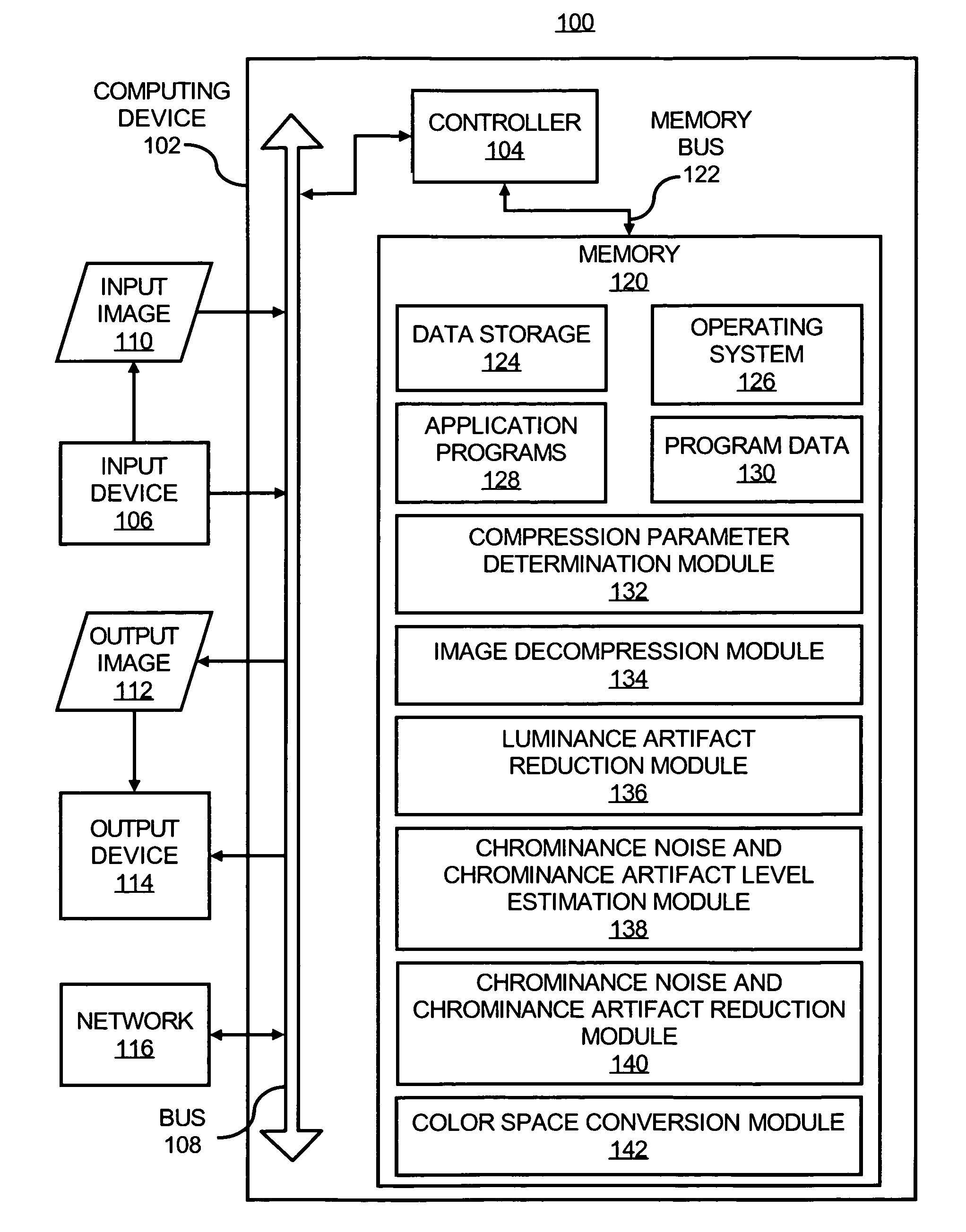Reducing noise and artifacts in an image
a technology of noise and artifacts, applied in the field can solve the problems of blockage and ringing, correlated luminance and chrominance errors, and traditional digital images from low resolution sources, and achieve the effects of reducing noise and artifacts in images
- Summary
- Abstract
- Description
- Claims
- Application Information
AI Technical Summary
Benefits of technology
Problems solved by technology
Method used
Image
Examples
Embodiment Construction
iment of the invention; and
[0009]FIG. 4 illustrates a computer system, which may be employed to perform various functions described herein, according to an embodiment of the invention.
DETAILED DESCRIPTION
[0010]For simplicity and illustrative purposes, the present invention is described by referring to embodiments thereof. In the following description, numerous specific details are set forth in order to provide a thorough understanding of the present invention. It will be apparent however, to one of ordinary skill in the art, that the present invention may be practiced without limitation to these specific details. In other instances, well known methods and structures have not been described in detail so as not to unnecessarily obscure the present invention.
[0011]An input image may include one or both of compression artifacts and image noise. As described in greater detail herein below, the input image may be processed in various respects to substantially reduce or eliminate both of t...
PUM
 Login to View More
Login to View More Abstract
Description
Claims
Application Information
 Login to View More
Login to View More - R&D
- Intellectual Property
- Life Sciences
- Materials
- Tech Scout
- Unparalleled Data Quality
- Higher Quality Content
- 60% Fewer Hallucinations
Browse by: Latest US Patents, China's latest patents, Technical Efficacy Thesaurus, Application Domain, Technology Topic, Popular Technical Reports.
© 2025 PatSnap. All rights reserved.Legal|Privacy policy|Modern Slavery Act Transparency Statement|Sitemap|About US| Contact US: help@patsnap.com



